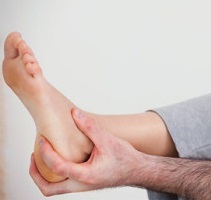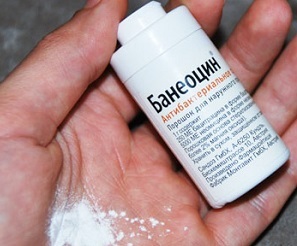 The main function of the calcaneus is depreciation. The heel is very sensitive because it contains a large number of blood vessels and nerve endings that go through it to other parts of the foot. Therefore, at any even the most minor damage a person feels pain.
The main function of the calcaneus is depreciation. The heel is very sensitive because it contains a large number of blood vessels and nerve endings that go through it to other parts of the foot. Therefore, at any even the most minor damage a person feels pain.
For active and active people, pain in the heel of walking can be a real test, preventing them from achieving their goals. But even if a person leads a sedentary lifestyle, in the heel in the morning after sleep can cause a lot of problems.
In order to somehow alleviate its fate, it is necessary first to understand what causes this pain, and only then to take further actions. Why do the heels of the legs ache and how to treat them? Let's try to understand.
Causes of pain in the heels of walking
What is it can be and how to treat? Many people experience pain in the heel while walking, but do not attach importance to them, considering that this is the result of strikes against the hard surface of the earth. A false assumption causes many problems in the future, since the diseases causing the symptom continue to progress.
Consider the main causes of pain:
- Heel spur or plantar fasciitis. This is the investigational cause of chronic inflammation of the fasciitis of the sole. With this disease, the foot zone accumulates calcium salts, which subsequently forms a bone growth. As a rule, this stage is accompanied by a weakening of unpleasant sensations in the foot. However, in the morning, pain is felt in the area of the heel when walking. Depending on the location of the spur, it can hurt both the heel of the left leg and the right leg.
- Overvoltage of the fascia. The long bundle supports the shape of the foot, provides cushioning properties of the arch. After doing exercises such as running, jumping, there is a feeling of overtraining. The leg needs rest, but shoes with insufficient supination cause inflammation of the plantar fascia, namely fasciitis. The heel hurts badly, especially when walking in the morning, when a person just rises from the bed and the fascia stretches. Chronic traumas and sprains lead to the growth of bone tissue at the base of the calcaneus - the appearance of a spur. It further intensifies the pain during training and walking.
- BursitisIs a disease that causes inflammation of the tissue passing along the foot, connecting the bone of the heel with the toes. The inflammatory process is characterized by increasing pain, especially in the morning. You can calm down the pain with the help of massage, but with the attack on the heel the pain will inevitably return.
- Achilles. Inflammatory process in this anatomical formation arises due to constant loads on calf muscles (climbing uphill, jumping), wearing uncomfortable squeezing shoes and walking on high heels. The disease is characterized by soreness in the projection of the tendon, and throughout its entire length. In addition, mandatory pain occurs above the heels of medium intensity and swelling of the tendon itself. In the absence of treatment and reduced immunity, purulent inflammation of the Achilles tendon can occur, then pains over the heel become more intense, to the point that a person can not step and step. In addition to this, the inflammation can reach such a level that a tendon rupture can occur. This condition requires urgent medical attention.
- The cause of pain in the heel can be anddiseases of the spine, especially its lumbar region, often flowing with symptoms of sciatica. This pain is familiar to many, because its focus is located in the lumbar region, then passing through the buttock area, the back wall of the hip, sinking to the very heel. The main signs of pain in osteochondrosis of the lumbar region is a feeling of numbness and tingling in the thigh.
- Reactive arthritis. This disease has an infectious etiology and is provoked by such pathogens as Yersinia, Salmonella, Shigella, Campylobacter, Clostridium, Chlamydia, Mycoplasma, etc. Characteristic signs, in addition to pain in the heels, are symptoms of inflammation - swelling, redness, increased local temperature.
- Some infections, including sex. In many cases, hidden infections cause reactive inflammation of the heels. Sometimes it turns out by certain signs to determine the infectious nature of the inflammation of the tendons of this part of the foot.
- Gout - in the body accumulate salts of uric acid. They provoke acute pain, swelling. One or more joints become red, become hot and sensitive even to small touches. Depending on the location, the heel of the left leg or right hurts.
Causes of pain in the heel when walking, not caused by diseases:
- First of all, if walking pains appeared in the heel, you needpinpoint your shoes, in particular this applies to women, lovers of high heels. This is the most dangerous enemy of the foot. When wearing such shoes, the feet are subjected to constant overload, and as a result, strong shooting pains in the heel can occur during walking.
- Permanentfooting for a whole day. By the end of the day the legs are tired and the person can feel soreness in the heels while walking.
- Stableobesity or a sharp set of weightand for a short time promotes an increase in the load on the feet.
- Contusion of calcaneus. As a result of injury, neighboring tissues can become inflamed, and when walking, severe pain will occur. Symptoms are the same as with trauma to the tendon. Within a week, the injury site turns red, then turns blue and turns yellow. Symptoms grow gradually.
- Atrophy of the subcutaneous fat pad in the heeloccurs as a result of a sharp weight loss or an increase in everyday motor activity, coupled with physical overload.
As you can see, there are a lot of reasons for pain in the heel when walking, including after sleep. Therefore, it is important at such signs to consult a specialist for advice. After all, in each individual case, the treatment will differ depending on the cause, so it is worthwhile to conduct a diagnosis to find out what it can be.
Diagnostics
Before you figure out how to treat pain in the heel when walking, you need to correctly diagnose the symptom, as well as determine the cause of its development. As a rule, for the diagnosis to an experienced specialist it is enough:
- complaints of the patient;
- patient's medical history (presence or absence of previous pathologies, injuries);
- examination of the foot for the presence of modifications in it;
- X-ray examination will give a clear picture of specific changes in the case of certain diseases.
In some cases, this information may not be enough, you may needadditional research:
- a general blood test (anemia, leukocytosis, increased ESR in rheumatoid arthritis, Bechterew's disease).
- biochemical blood test: an increase in uric acid with gout.
- microbiological analyzes to exclude the presence of bacteria affecting the development of rheumatoid arthritis;
- a puncture from the bone for further histological examination, is performed to exclude bone tuberculosis or oncology.
To eliminate pain in the heel, treatment of the underlying disease, which led to such a symptom, is necessary. Although painkillers (ketorol, etc.) can temporarily relieve you of unpleasant sensations, without eliminating the cause of pain in the heels, you will not get rid of. Therefore, at the slightest painful manifestations, you should consult a doctor and start treating the underlying disease as soon as possible.
How to treat pain in the heel when walking?
With the appearance of pain in the heel, treatment consists of medicamental and physiotherapeutic methods, creating foot rest, massage and therapeutic physical training. The constant use of special insoles reduces the pressure on the disturbing portion of the heel.
At home, pain in the heel when walking is treated with the help of such medications:
- Non-steroidal anti-inflammatory drugs - Ibuprofen, Ketoprofen, Meloxicam. Sometimes injections of corticosteroids are required (for example, with rheumatoid arthritis).
- Ointments- Diclofenac, Voltaren, Ketorol Gel, Butadion, Piroxicam Gel.
- People's means: ointments, decoctions, soothing baths and anti-inflammatory lotions.
In addition, a tight bandage is used, and UVT sessions are performed. During the treatment period, the load on the foot should be limited. Physiotherapeutic approaches, massages and special exercises often help. Thus the heel practically does not hurt at walking already by the end of day.
There was a pain in the heel, what kind of a doctor?
Depending on whether there was a trauma, doctors - therapist, traumatologist, orthopedist. It may be necessary to consult specialists of the following specialties: neurologist, surgeon, oncologist, phthisiatrist.
If you are not sure of the cause of the pain, then you can write to the reception to the district therapist. After the examination, he will send you to the right doctor.
Prevention
As you know, it is better to prevent the disease than to treat it later. Therefore, to prevent the occurrence of painful sensations in the foot area, you can do the following:
- Wear comfortable and properly selected shoes. Heel - no higher than four centimeters, shoes should not crush.
- At home, do exercises for the legs: bend and unbend the foot in a sitting position for two minutes. You can also take a simple tennis ball and roll it on the floor of your feet. Exercise to perform for 5-7 minutes for each leg.
- Properly eat and take action to fight excess weight.
- Take contrasting trays with herbs.
- Walking barefoot on the grass and sand on the beach.
Most importantly - you can not believe that the pain in the heel when walking will pass by yourself. It can only worsen and grow into other, more serious diseases. Therefore, when you have pain, you should immediately consult a doctor.

How to choose probiotics for the intestine: a list of drugs.

Effective and inexpensive cough syrups for children and adults.

Modern non-steroidal anti-inflammatory drugs.

Review of tablets from the increased pressure of the new generation.
 Antiviral drugs are inexpensive and effective.
Antiviral drugs are inexpensive and effective.



